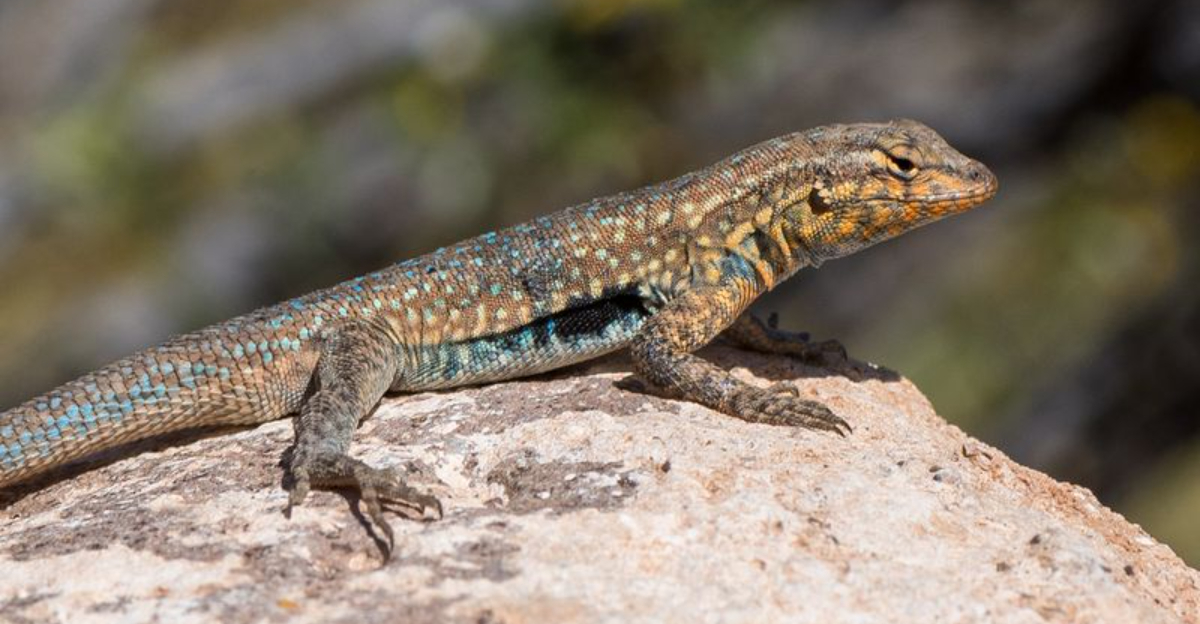Wyoming’s Red Desert is a land of extremes—and the reptiles that call it home are nothing short of extraordinary.
From blistering daytime heat to bone-chilling nights, these cold-blooded survivalists have mastered life in one of America’s harshest landscapes. Watch snakes carve silent paths through the sand and lizards bask on sunlit rocks, each perfectly tuned to the rhythm of the desert.
For wildlife lovers, the Red Desert is a rare window into the rugged, resilient world of reptiles thriving against the odds.
1. Great Basin Gopher Snake: Master of Desert Camouflage
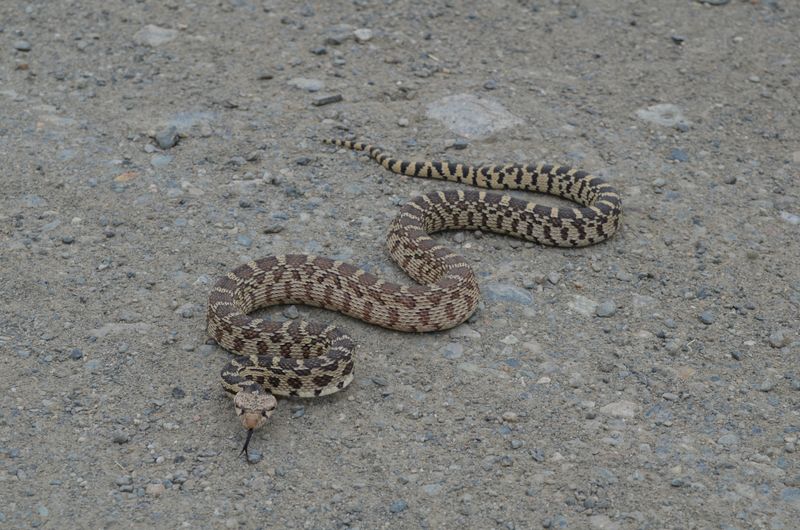
Stretching up to six feet long, these impressive constrictors rule the Red Desert’s sandy plains. Their tan and brown patterned bodies blend perfectly with the landscape, making them nearly invisible until they move.
Killpecker Sand Dunes provide excellent viewing opportunities during early mornings when these non-venomous hunters emerge to bask. Despite their intimidating size, they’re actually beneficial predators that keep rodent populations in check.
When threatened, they flatten their heads, vibrate their tails, and let out a loud hiss—mimicking rattlesnakes so convincingly that they fool predators and occasionally startle unsuspecting hikers
2. Western Terrestrial Garter Snake: The Desert’s Water Hunter
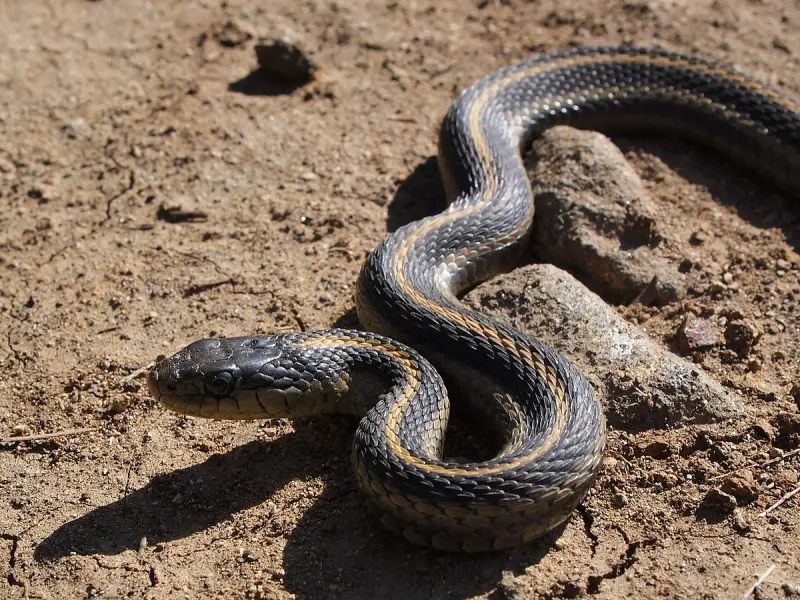
Yellow stripes zigzag across this swimmer’s dark body, creating a living lightning bolt that zips through desert wetlands. Unlike most Red Desert reptiles, these garters stick close to water sources, making Adobe Town’s seasonal pools prime viewing locations during spring and early summer.
I once spotted three of these beauties hunting tadpoles along a temporary stream after a rare thunderstorm flooded the basin. Their graceful underwater movements reminded me of ribbons dancing in the current.
Though completely harmless to humans, they release a musky odor when handled—nature’s way of saying “please don’t pick me up.” Look for them sunning on rocks near water’s edge in the morning hours.
3. Western Fence Lizard: The Push-Up Champion
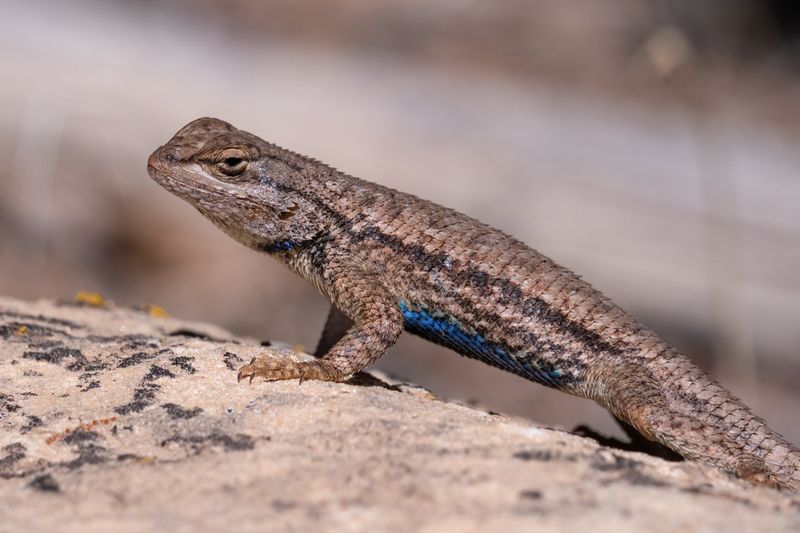
Blue bellies flash brilliantly when male fence lizards perform their signature push-ups atop rocks and fence posts. These athletic displays aren’t just showing off—they’re territorial warnings to rivals and advertisements to potential mates.
Steamboat Mountain offers stellar viewing opportunities where these spry reptiles dart across sun-warmed rocks. Their scales shimmer with metallic blue and bronze hues that catch the desert light like living jewels.
Scientists discovered these lizards’ blood contains a protein that kills Lyme disease bacteria! When ticks feed on them and later bite humans, the disease-causing bacteria die—making these little lizards unexpected health heroes of the ecosystem.
4. Desert Cottontail Rabbit: The Surprising Desert “Reptile”
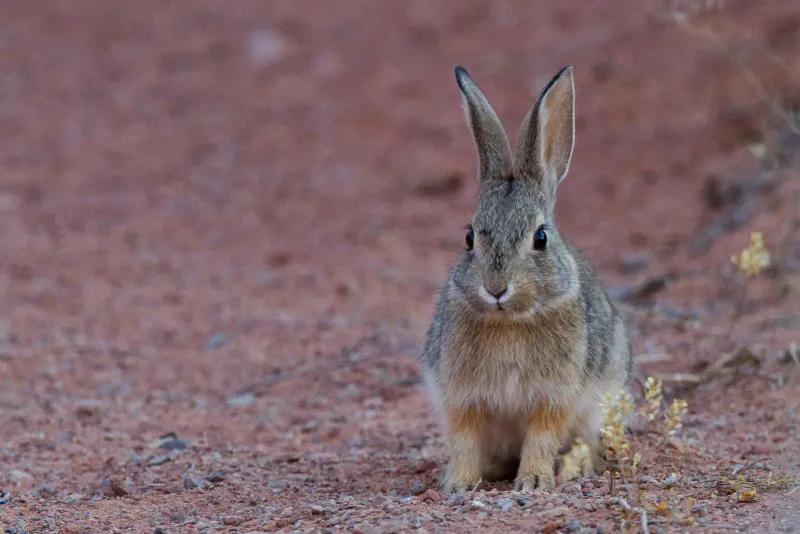
Wait—rabbits aren’t reptiles! Exactly right, and that’s your first lesson in desert wildlife observation: appearances can be deceiving. These fuzzy mammals frequently get misidentified by excited reptile-watchers from a distance.
Confusion happens especially at dawn near Boars Tusk formation, where cottontails hop along the same trails used by snakes. Their distinctive bouncing movement and round tail (different from jackrabbits’ straight black-tipped ears) gives them away.
The presence of cottontails actually indicates good reptile habitat—where these plant-eaters thrive, predatory snakes follow. Learning to distinguish mammals from reptiles sharpens your wildlife spotting skills for the real scaly creatures on our list!
5. Short-Horned Lizard: The Desert’s Living Pincushion

These bizarre little tanks deploy this startling defense mechanism when cornered by predators. Their flat, spiny bodies resemble miniature dinosaurs frozen in time on the desert floor.
Continental Peak’s gravelly slopes host healthy populations of these cryptic creatures. Patient observers might spot them performing their disappearing act—wiggling backwards into loose sand until just their eyes remain visible.
Unlike most lizards that run from danger, horned lizards freeze in place, relying on camouflage. Last summer, I nearly stepped on one before noticing its tiny breath puffing dust from the sand. Their diet consists almost exclusively of harvester ants, which they catch with sticky, lightning-fast tongues.
6. Bull Snake: The Desert’s Vocal Defender

Louder than a vacuum cleaner! Bull snakes produce the most impressive defensive hisses in the reptile world. These massive reptiles, often exceeding six feet in length, patrol the fringes of the Red Desert’s grasslands, where they help control rodent populations year-round.
Honeycomb Buttes provide excellent bull snake habitat, especially along the transition zones between sagebrush and grassland. Morning hikers might witness these golden-scaled giants crossing trails or climbing low shrubs in search of bird nests.
Don’t let their aggressive displays fool you—bull snakes are non-venomous and surprisingly gentle when not threatened. Their population decline signals environmental problems, making each sighting valuable data for conservationists tracking the health of Wyoming’s unique desert ecosystem.
7. Northern Leopard Frog: The Desert’s Disappearing Amphibian
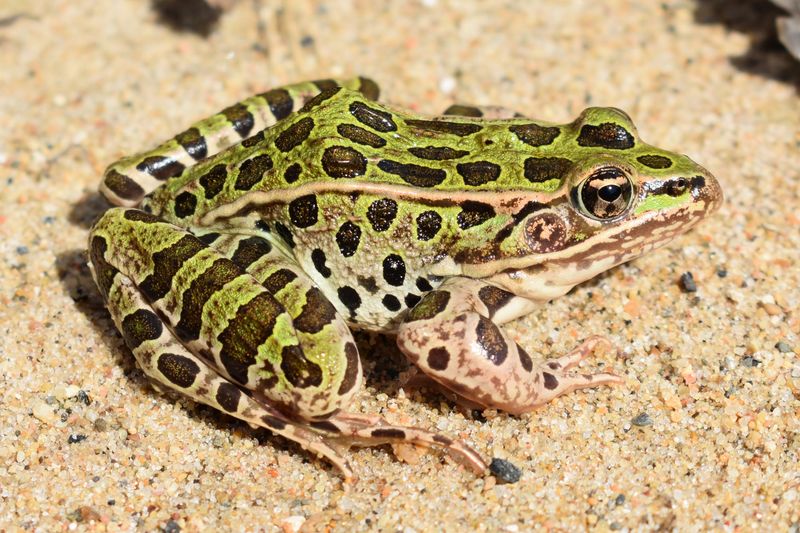
Emerald athletes with spotted coats, these remarkable jumpers aren’t reptiles but amphibians that share habitat with our scaly friends. Their presence in isolated desert wetlands represents a biological miracle—surviving where water is precious and temporary.
Chain Lakes Basin offers rare viewing opportunities during spring when seasonal pools fill with snowmelt. Leopard frogs have declined dramatically across Wyoming, making Red Desert populations especially significant to scientists.
Their distinctive snore-like calls echo across desert nights during breeding season. The tadpoles develop at record speed—racing against evaporation to complete metamorphosis before their aquatic nurseries dry up. Some populations have adapted to complete their entire life cycle in just 70 days!
8. Side-Blotched Lizard: The Color-Changing Strategist

Rock paper scissors comes alive in these tiny lizards! Males display three distinct throat colors—orange, blue, or yellow—each representing different mating strategies that cyclically dominate each other, just like the playground game.
Oregon Buttes’ rocky outcrops provide perfect habitat for observing these fascinating creatures. No bigger than your pinky finger, they dart between sun and shade with remarkable speed, regulating their body temperature with precision.
The dark blotch behind their front legs gives them their name—a field mark visible even to novice wildlife watchers. During my last visit, I counted twelve individuals on a single boulder, each defending territories smaller than a dinner plate. Their abundance makes them ideal starter species for children learning reptile identification.
9. Prairie Rattlesnake: The Desert’s Warning System
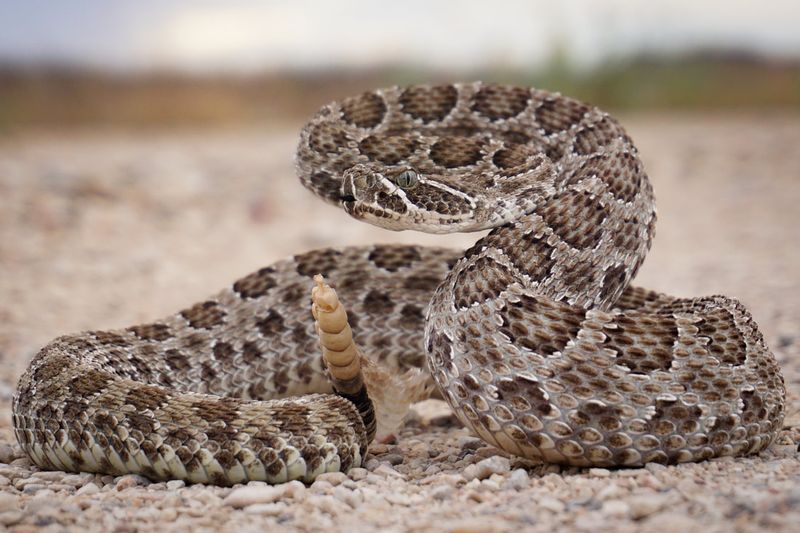
That iconic buzz means “step carefully!” Wyoming’s only venomous snake deserves respect rather than fear. Prairie rattlers rarely exceed four feet but pack enough venom to deliver medically significant bites.
Alkali Draw’s rocky ledges harbor small populations, especially near rodent colonies. Always scan rocky areas before sitting down and stay on established trails. Despite their fearsome reputation, rattlesnakes avoid human contact when possible, using their famous rattle as an advance warning system.
Rattlesnakes serve as environmental barometers—their health reflects the entire ecosystem’s condition. Wyoming law protects them from collection or harassment. If encountered, simply back away slowly and give these important predators space to retreat. Their diamond-patterned bodies provide excellent camouflage in dappled shade.
10. Common Kingsnake: The Snake-Eating Snake
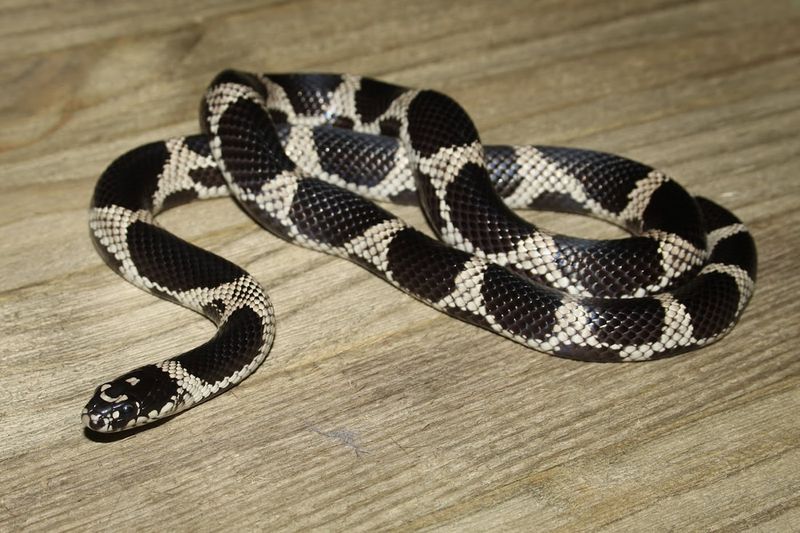
Immune to rattlesnake venom! These glossy black serpents with brilliant white bands fearlessly hunt and devour other snakes, including venomous species. Kingsnakes represent nature’s perfect control system for maintaining balanced reptile populations.
Jack Morrow Hills conceals these secretive hunters, particularly in areas with abundant rock crevices and rodent burrows. Dawn and dusk offer the best viewing opportunities when they actively patrol their territories.
Kingsnakes constrict their prey with impressive strength, capable of subduing animals larger than themselves. The desert’s harsh conditions have made them opportunistic feeders that rarely pass up a meal—they’ll consume everything from eggs to lizards. Their calm nature around people makes them a top pick for wildlife photographers aiming to snap that picture-perfect reptile moment.
